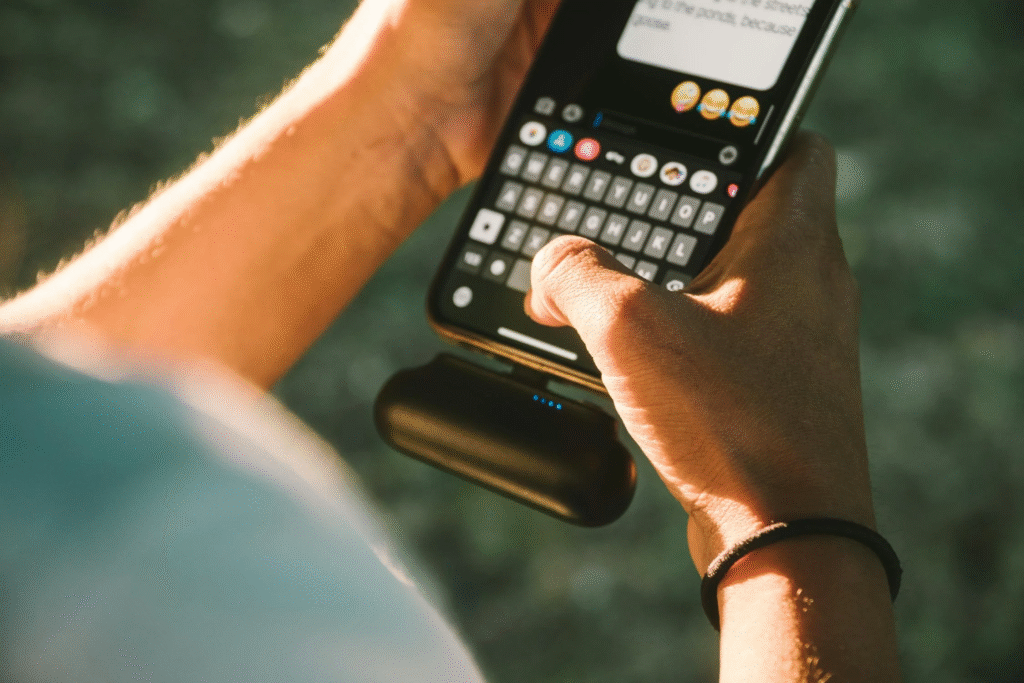
Every restaurant loses customers, but not every restaurant has a plan to get them back. With rising inflation and global economic turbulence, 33.4% of consumers are cutting back on non-essential spending, including their restaurant budgets.
But your restaurant doesn’t have to get the short end of the stick. What customers need is a valid reason to re-engage with your restaurant’s brand. Loyalty is what you’re looking for: customers who are willing to spend at your restaurant regardless of the situation. And there’s a 3-letter word that’s the answer to all your problems: SMS.
SMS marketing gives customers the most immediate line of communication with your restaurant. That is just one step away from engagement. Once you have that, loyalty isn’t that far behind. So, what better way to get loyalty than through an SMS campaign from your loyalty program?
In this article, we’ll dive into the ways you can use SMS marketing to re-engage lost customers for your restaurant and maximize loyalty programs for your benefit.
Understanding Customer Churn and SMS Re-Engagement
What is a lost customer?
Lost customers, AKA lapsed customers, are people who haven’t been engaging with your restaurant for a while. They may have visited once but never returned. But what’s the reason behind it?
33% of consumers are driven away because of a lack of personalization. That’s a waste! Especially when 65% of revenue comes from repeat purchases by existing customers. By leaving inactive customers alone, you’re losing money.
How do you stop it? The first step is to detect the signs, like reduced purchases or negative feedback. Next, you can split them up into groups. There are 2 types of lost customers:
- Lost new customers
These customers may have dined in your restaurant once, but they never come back for seconds. These are one-time customers who haven’t developed loyalty to your restaurant… yet.
- Lost loyal customers
These were once returning customers who had regularly been to your restaurant. You could count on their purchases before, but for one reason or another, they slowly drift away. These are loyal customers who have lapsed in their engagement with your restaurant.
The last step is to create a plan to win customers back. One of the best ways to do it is through SMS re-engagement!
What is SMS re-engagement?
SMS re-engagement, AKA SMS remarketing, is a powerful strategy that uses text to reconnect with existing customers that have gone cold or lost interest in your business.
What makes it different from your usual promo texts is its purpose. Because your target is people who have visited your restaurant before, you have more data to your advantage. You can use this customer data to send texts that build on your existing relationship.
Let’s put it this way: it’s easier to reach out to an old friend and schedule a hangout than to turn a stranger into a friend. It’s not that different with customers!
The Power of SMS and the Value of Re-Engagement
Why Re-Engagement Matters
Did you know that 80% of profits come from 20% of your existing customers? In fact, it’s 6-7 times more expensive to acquire a new customer than to keep an old one. Reconnecting with a lost customer is both more cost-effective and profitable than acquiring newcomers.
Why SMS Works for Re-Engagement
You might be wondering, “If it’s so important, why use SMS? That’s old school. Do people still use SMS?” Well, SMS is a game-changer for restaurants. It’s easy, multi-purpose, and affordable. It has an open rate of 98% compared to email’s 26.8%.
Believe it or not, everyone checks their texts, even customers who’ve stopped interacting with your restaurant. So if you want to increase your chances of re-engaging with lost customers, then you can’t go wrong with using SMS marketing.
Steps to Re-Engage Lost Customers with SMS
How to Identify Lost Customers
If you have a loyalty program, it’s as simple as checking who’s stopped buying from you. With access to purchasing data, you can detect lost customers by checking their last order dates.
Even better, you can segment them into groups, like high spenders, one-time visitors, or reward members. These different segments make it easier for you to target them through curated SMS marketing campaigns.
How to Craft a Win-Back SMS
- Personalize Your Communication
If you remember customers’ birthdays, they’ll return the favor by remembering to eat at your place! By using a loyalty program, you can collect customer data and utilize it to personalize your messaging. Lost customers will notice if there’s extra effort in how you reach out to them.
Example: “Happy Birthday, Ben! Celebrate with the perfect meal by booking now. Show this SMS before billing to enjoy 20% off on selected menus.”
To make it even easier, you can automate the text to be sent on customers’ birthdays, so you don’t have to fuss about manual scheduling.
- Use empathy to connect with customers emotionally
Reach out to your customers as if you know them personally. I mean, you do know their favorite order based on purchase history, so don’t be afraid to act friendly. Use words that drive home how long it’s been since they last ordered, and warm up to them by offering promos.
Example: “We’ve missed you. To welcome your return, we have a special buy 1 get 1 free promo just for you! Bring a friend and stop by within the week.”
- Offer worthwhile incentives
Fear of missing out is a phenomenon that you can cash in on. You want customers to think, “I have to try this! What if I won’t get another chance?” Show off what’s new to keep things exciting and your restaurant relevant.
Example: “Enjoy the summer weather with our limited-time menu. Enjoy fresh seasonal ingredients like juicy peaches and cool, refreshing mango ice cream.”
Limiting the amount of time people can try new menus gives them the urgency to come by as soon as possible. It’s the perfect opportunity to reconnect with inactive customers and rekindle your restaurant’s relationship.
- End your text with a clear call to action (CTA)
The key to a perfect win-back SMS is to cap it off with an encouraging call to action. Forgetting to include it can make or break the message that you want your customers to remember.
Example: SimpleLoyalty once helped a cafe attract an additional 236 customers by offering 600+ points. The campaign resulted in an ROI of RM 36,659. To achieve that, we used this CTA to finish our texts: “Dine in & use your points now!”
Sometimes, a simple and straightforward message gets the point across. If it ain’t broke, don’t fix it!
How to Time and Automate Your Messages
- Set automated triggers
Before you activate your SMS campaign, you should customize when customers are considered lost. Depending on what you need, it can be after 30, 60, or 90 days of inactivity. Once you’ve got it all set up, you can automate it so that the SMS is only triggered after the customer is categorized as lost. Specific triggers, like abandoned carts for online orders or customer birthdays, can also be added on top.
- Use the recommended cadence
You don’t want to be put in spam by annoying your customers. What you want is to reconnect, not alienate. So, like any relationship, sometimes it’s good to give them time. But… a couple of texts once or twice wouldn’t hurt! It’s a simple way to let them know they’re always on your mind.
That’s why a drip campaign with an initial message and 1-2 follow-ups is the ideal number of texts. Pro tip: unless they’re high-priority customers, leave at least a week between follow-ups, or else you’ll risk irritating them!
- Integrate SMS tools with your loyalty program for hands-free campaigns
An easy way to automate your SMS campaigns is to integrate them with your loyalty program. It can make your job a whole lot easier and take the burden of micromanaging messages off your shoulders.
Loyalty programs allow you to automate hyper-personalized SMS that actively reach out to customers while you can passively enjoy the benefits of renewed customer relationships.
How to Choose the Right Offers
- Drive urgency with limited-time offers
FOMO is a powerful motivator that pushes customers to take action by making them afraid of missing out on something exclusive.
You can take advantage of this by crafting special limited-time rewards that tap into the urgency of a purchase. Brief but attractive promos will give lost customers no choice but to re-engage with your restaurant!
- Send loyalty-based messages
What customers want to hear most of all is useful information, something that looks to benefit them as much as the restaurant. That’s why reminding customers that they still have unredeemed loyalty points ensures the message won’t be ignored.
It’s especially useful when their points are soon to expire. Simply letting them know is incentive enough to reel them back into your restaurant. And once they’re back, they’re more likely to stay.
- Personalize promos based on order history
Let’s say your customer has a history of dining at a table for two, always with their partner, then limited-time Valentine’s Day deals or bundles for couples will most likely attract them.
You can tailor promos using their purchase history to get the most customers out of your offers. It’s much easier to re-engage customers who have signed up for your loyalty program because you get more data based on their behavior.
- Use VIP-style messaging to highlight exclusivity
“As one of our loyal customers, we have a special treat just for you. Your favorite grilled chicken salad is 20% off. Grab it before it’s gone!”
No one likes rewards that everyone else gets. The more common something is, the less valuable it becomes. If you want customers to come back to your restaurant, you need to make them feel like they’re irreplaceable.
How to Measure Success
- Track key metrics
Even after you’ve got it all planned out, nothing beats a little trial and error for good measure. To do that, monitor key metrics that gauge your success.
These include the rate at which customers redeem their loyalty points, how many people open your messages, how many click through the links, and the win-back conversion rate, or how many lost customers successfully made a return visit.
- Perform A/B testing
Before finalizing an SMS template, you can use A/B testing to figure out which messages work best. Have two different text templates run at the same time and track customer response rates based on the timing and embedded offers. You can use the results as a baseline for future campaigns and tweak it accordingly.
- Adjust your strategy based on customer feedback
Maybe there’s a valid reason why your customers aren’t coming back. What if it’s not them, it’s you? To clear things up and ease your mind, you can make a survey and ask why they haven’t been back or purchased anything for a while.
Maybe you find out that customers lapse from your restaurant because the price point is no longer affordable, and competitors sell for better value. From there, you can use SMS marketing to offer timed discounts and cheaper menu options like value meals.
Remember, losing customers isn’t the end! There’s still a chance to get them back. So use a loyalty program with smart SMS marketing before the window
What’s Next: Take Action on SMS Re-Engagement
- Audit your customer database to identify lapsed customers
Use analytics to pinpoint when and which customers stopped engaging with your restaurant. Identifying them can allow you to figure out their last order and what made them drift away. That information is crucial in helping you craft the perfect SMS that re-engages customers.
- Start small with one re-engagement SMS campaign
Start with a single re-engagement campaign to measure effectiveness before scaling up. Don’t overwhelm yourself or your team with handling multiple SMS campaigns if you’re not sure it’ll be successful. Test it first, and then roll them out slowly. Once you’re able to successfully track the progress of one campaign, you can evaluate and refine it for future use.
- Automate where possible
Work smarter, not harder. If you have a loyalty program that can accommodate SMS automation, then you should let it do most of the work.
Only be hands-on when you need to, like to test and refine your message based on customer data. Or to review it monthly for optimization and to stay ahead of your competition. Once you’ve done that, a good SMS re-engagement campaign should run itself.
Conclusion
If your restaurant is attracting customers who only spend one time, you’re not maximizing your potential profit. To maximize your return on investment, you need to re-engage lost customers and give them a good reason to make repeat purchases. SMS is your secret weapon.
26% of lost customers return with double the customer lifetime value after a win-back campaign. If you’re not using SMS marketing to re-engage lost customers, you’re missing out. Integrated with your loyalty program, SMS remarketing can be hyper-personalized, automated, and data-driven, ensuring a consistent conversion rate with strong engagement.
Ready to turn one-time visits into loyal regulars? SimpleLoyalty’s easy-to-use platform helps you keep customers coming back for more. Get in touch with our friendly experts today!


